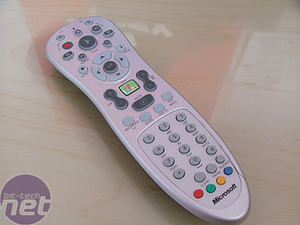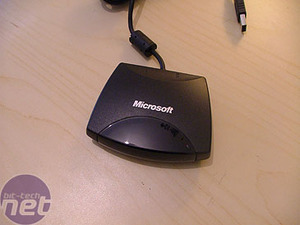Picking hardware for Media Center
September 5, 2005 | 13:25
Companies: #avermedia #hauppauge #microsoft #quiet-pc #zalman

Conclusions
So you have select a CPU and motherboard combination, nailed the RAM, worked our your graphics needs, picked the right amount of storage and grabbed yourself a DVD writer and you've housed all your neat gear in a sexy hone cinema chassis powered by a silent PSU.What now?
Well, you don't want to be using a Media Center PC without a remote control - it just ruins the whole point! Microsoft make a controller than you can just plug in to USB with extra drivers needed. It has remote blasters to control your satellite or cable box, and can also learn to control your TV. It could be the replacement remote for your home theatre system, conceivably. For about £25, it's a steal.


We'll walk you through how to install it, how to configure your hardware, showcase what it can do and also give you some tips that we've picked up along the way.
Until then, we thought we'd leave you with this list:
- Microsoft's Bible of what is and isn't compatible with Media Center. If the component you're thinking of isn't on this list, you might want to think of avoiding it to save yourself some heartache. You can find it right here.
- Have a gander at the Media Center pages for Nvidia and ATI, and also the dedicated page for Nvidia's PureVideo decoder.
- Check out some of the best home cinema chassis on the market and the quietest PC components over at QuietPC.
- Drop by the Hardware Forum on bit-tech for further discussion on your component choices.





MSI MPG Velox 100R Chassis Review
October 14 2021 | 15:04





Want to comment? Please log in.